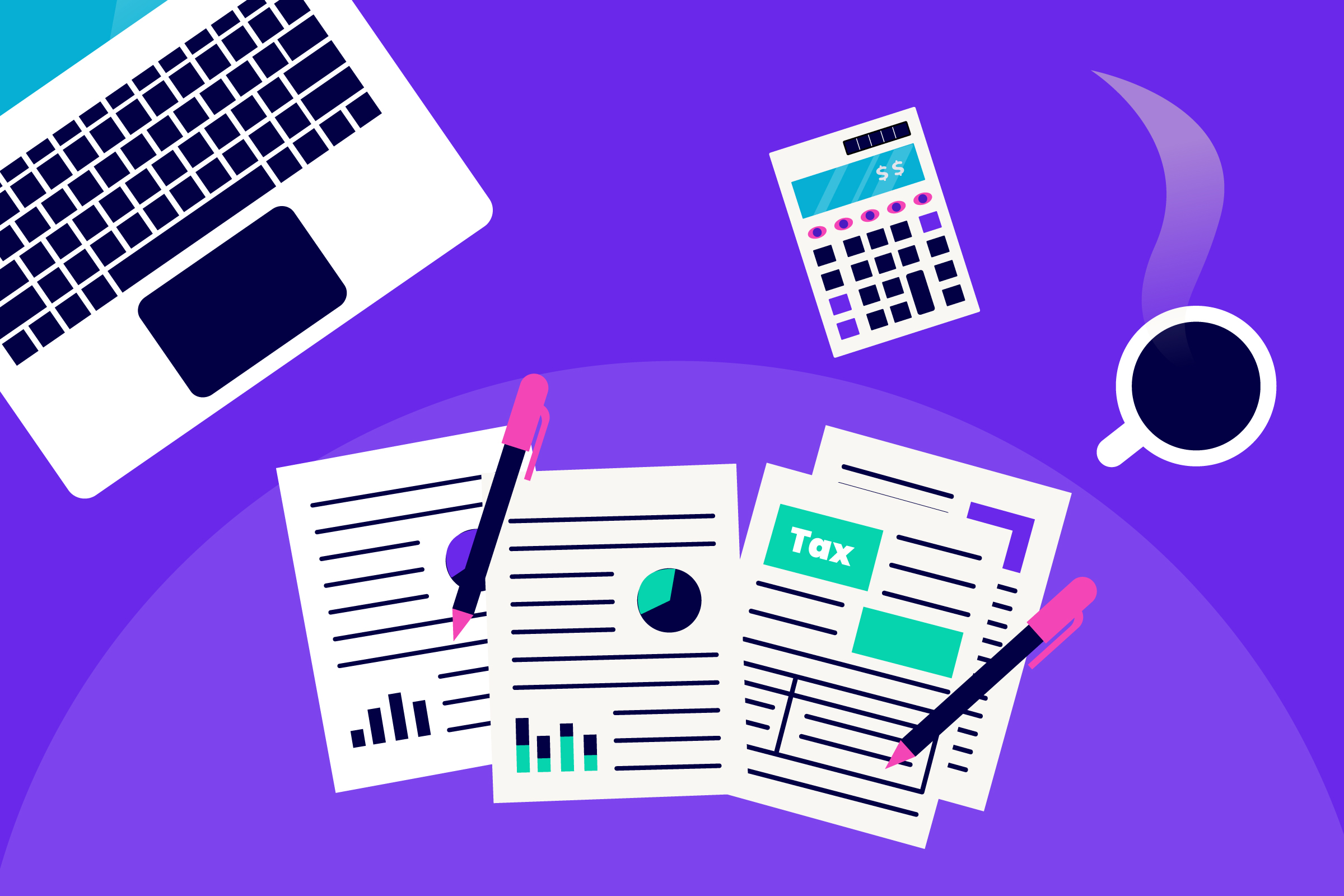
Articles
7 Time-Saving Tax Tips for Every SMB
March 14, 2022

The U.S. tax deadline for businesses is here again (cough, March 15, cough). And if you procrastinated on preparing and filing your return, you’re definitely not alone. Because in 2020, one-third of Americans reported filing last minute.
Luckily, there’s a better way. By taking proactive tax steps all year long, you’ll be ahead of the game and ready to file long before the deadline. Not only that, but starting your tax preparation early can help you avoid last-minute stress, ensure you’ve exhausted all tax deduction opportunities, and free up time to focus on growing your business.
Interested in getting a jump on the next tax year? We had a feeling you might be. Check out these seven tax-prep tips that’ll help set you up for early success:
1. Set aside time for organizing tax records.
SMB owners often cram tax prep into one day. (Or, if you’re a masochist, an entire weekend). Instead, try setting aside time every week to focus on tax tasks — whether it’s saving files to a particular tax folder or updating your revenue and expense ledger. Even if you only set aside 30 minutes per week, when the deadline arrives, it’ll just be a matter of filing the return (or handing off the documents).
2. Have a system for saving receipts.
You need to have records (AKA receipts or a ledger) of your business expenses to claim tax deductions. So make sure you have a system for saving receipts — whether it’s logging them into your business records or snapping a picture for your accounting software. And for the latter, you can use tools like Expensify, Neat, and even Evernote to scan and save your receipts. Some owners even dedicate an entire credit card toward business expenses. That way, they can just refer to the statements for records. Whatever you do, just make sure you have an SOP (standard operation procedure) for your bookkeeping.
3. Stop tracking data manually.
Manually tracking revenue and expenses in a spreadsheet is a huge time suck. Instead, consider investing in financial tools to automate that part of the process. For example, accounting software (like Quickbooks and FreshBooks) syncs with your bank, credit card, or payroll statements. Then, it automatically sorts the expenses into tax categories so you’re prepared to file at the drop of a dime. An added bonus: you’ll have real-time data on how your business is doing.
4. Automate your record-keeping.
Instead of digging through physical records, consider automating your record-keeping with free and inexpensive tools. That way, it happens all year long and without any effort. For example, you can invoice with Wave, accept payments with PayPal, or use the previously mentioned bookkeeping software. Whatever you choose to implement, these tools can make your record-keeping automatic (and available at the click of a button).
5. Research small business tax credits.
Tax credits are a business owner’s best friend because they help lower tax liability and keep cash in the business. Most small business tax credits fall under the “general business credit,” and the IRS makes you file a form for each one. Tax credits are often associated with actions that benefit your business, your employees, and the community around you — whether it’s offering health insurance or using an electric vehicle as your company car.
6. Hire and consult a tax professional.
Some tasks are better left to the professionals. After all, filing business taxes can be complex (not to mention mind-numbing) for beginners unfamiliar with the U.S. tax code. Plus, when you hire a certified public accountant (or CPA), you have access to a wealth of deduction and credit knowledge. Meaning, they deeply understand how to lower what you owe to the IRS. But if you still want to do your own taxes, consider using tax software built for business owners.
7. Pay estimated taxes to avoid fees.
Typically, business owners have to pay quarterly estimated taxes on their income throughout the year (unless you plan to owe the IRS less than $1,000 for that tax year). If you don’t pay your estimated taxes (or just miss the deadline), you generally have to pay penalty fees and interest for those missed payments. It’s a big waste of your business resources, so be sure to set up a system for paying your estimated taxes instead. And since you’ve been staying organized all year long, calculating the quarterly payment will be a breeze!
Use these tax prep tips to avoid last-minute filing stress
No one likes the chaos of last-minute tax prep and filing. If you’re an SMB owner, it’s just a matter of implementing these tips so you can fend off procrastination, stay organized throughout the year, and walk into the next tax day with total confidence.
Similar Blog Posts











